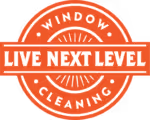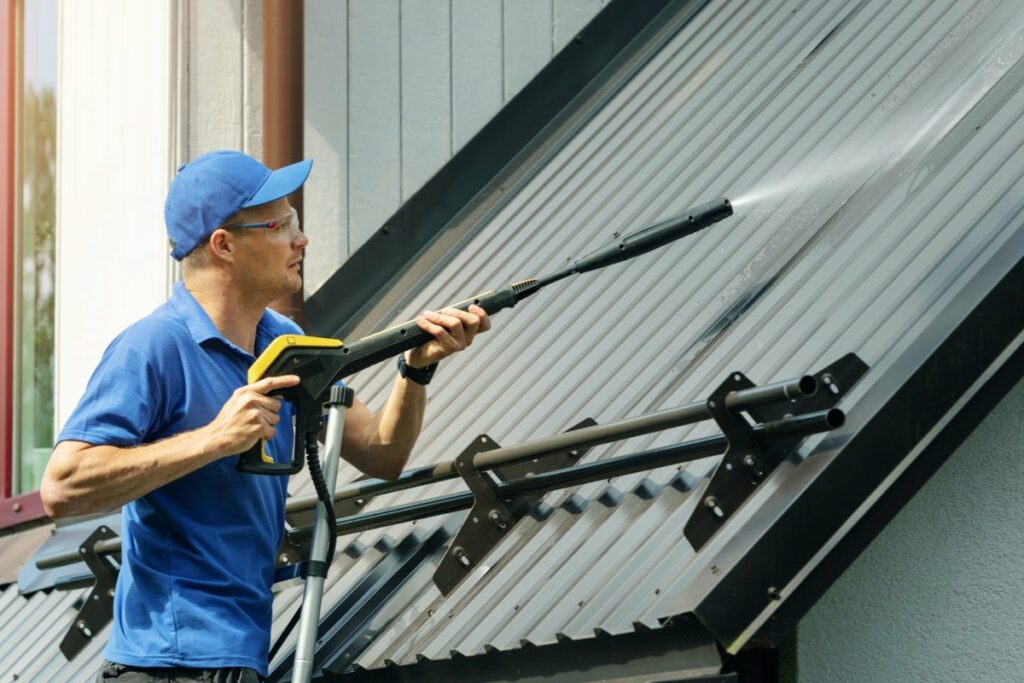Pressure washing is an effective and efficient way to clean the exterior of your home. It can remove dirt, mold, mildew and other pollutants from the surface of your home. But it’s important to understand that it’s not a one-size-fits-all solution. There are certain dos and don’ts when it comes to pressure washing your home that you should be aware of.
As a professional in the home exterior cleaning industry, I’m here to provide you with tips on how to get the best results from pressure washing your home. In this article, we’ll take a look at some key dos and don’ts for pressure washing your home. We’ll explore what materials can be safely washed with pressure washers, which nozzles are best for different surfaces, and how much water pressure is safe for various materials.
We’ll also discuss how long you should leave detergents on surfaces before rinsing them off, as well as proper safety precautions for using a pressure washer. By following these guidelines, you’ll be able to maximize the efficiency of your pressure washing effort while minimizing any potential damage to your property.
What Materials Can Be Pressure Washed?
When it comes to pressure washing your home, there are several materials that can be safely and effectively cleaned.
If you choose the correct cleaning solutions, and use the right water temperature, you can pressure wash brick, stone, wood, vinyl siding and aluminum siding. Pressure washing is also beneficial for cleaning driveways and sidewalks.
It’s important to remember that not all surfaces will respond well to pressure washing.
Glass windows and doors should never be power washed as the high-pressure water could cause them to crack or shatter. Additionally, any wooden surfaces should be checked for rot before being pressure washed because if they have rotted away too much, the pressure of the water may cause further damage.
The next step in effective pressure washing is selecting the right nozzle.
Different nozzles are used depending on what material you need to clean and how dirty it is.
What Nozzles Should I Use?
When pressure washing your home, it is important to consider the type of nozzle you are using. Different nozzles can help protect surfaces and prevent damage to your home.
For instance, a wide fan nozzle is great for cleaning flat surfaces such as driveways or patios. This type of nozzle will help keep the water from getting too concentrated in one area and damaging the surface below.
A zero-degree nozzle is also ideal for cleaning brick walls or other hard surfaces like concrete. This nozzle creates a more powerful jet of water that can remove dirt and grime quickly without damaging the surface underneath.
For other types of surfaces like wood, stucco, or vinyl siding, you should use a wide angle or low-pressure setting on your pressure washer. These settings allow you to clean the surface without applying too much force which could cause damage or wear away the material over time.
You should also be careful when using high-pressure settings around windows or doors as this can break them if not used correctly. By using the correct nozzles and settings on your pressure washer, you can ensure that your home stays safe and intact while still looking great after pressure washing.
Another important factor to consider is how much water pressure is safe for each surface? Too much water pressure can cause damage to softer materials such as wood, stucco, or vinyl siding while too little won’t be effective in removing dirt and debris from harder surfaces like bricks or concrete.
Knowing how much water pressure to use on each type of surface will help keep your home looking great while protecting its integrity over time. Taking these steps will allow you to effectively pressure wash your home in a way that won’t cause any damage down the line.
Moving forward with this knowledge, we’ll explore how much water pressure is safe for each surface around your home.
How Much Water Pressure Is Safe?
Having the right nozzle for your pressure washer is essential, but it only goes so far. It’s important to remember that the pressure you use also matters when pressure washing your home. Too much water pressure can damage your siding and other parts of your home, while too little won’t do a thorough job of cleaning.
To make sure you achieve the perfect balance between power and safety, here are some tips on how much water pressure is safe to use.
First, it’s important to keep in mind that cold water should be used unless you’re specifically instructed otherwise by a professional cleaner or manufacturer. The combination of high temperatures and high-powered machines can cause damage to many materials. Additionally, hot water will have a tendency to streak certain surfaces if not done correctly. It’s best to stick with cold water for most exterior home cleaning jobs.
Secondly, any detergents or cleaning solutions you use should be applied at low pressures so they don’t affect the integrity of the surface being cleaned. You want to avoid over-spraying or splashing onto areas around the target spot as this could cause staining or discoloration on the siding or other materials around it.
Lastly, take your time when using any detergent; don’t rush through it since leaving it on too long can lead to serious damage or residue left behind after rinsing off with cold water. With these simple tips, you’ll keep your home looking great without damaging its exterior!
How Long Should I Leave Detergents On Surfaces?
When using detergents, it’s important to avoid leaving them on surfaces for too long. If you use eco-friendly detergents, they should be left on for no more than 5-10 minutes; if you use a more potent detergent, never leave it on for more than 3-5 minutes!
This is because the longer the detergent sits, the more likely you are to cause damage to whatever surface you’re cleaning – and nobody wants that.
When pressure washing your home’s exterior, be sure to check the instructions provided with the detergent. The instructions will tell you exactly how long it should stay on the surface in order for it to work properly without causing any damage.
For even more protection against potential damage, try pre-treating the area with an eco-friendly solution before applying any other product.
Always wear protective gear when handling or applying any kind of chemical cleaner – this will greatly reduce your risk of inhaling potentially dangerous fumes or coming into contact with any harsh chemicals that may cause irritation or worse.
Taking these extra precautions will ensure everything goes smoothly and safely while pressure washing your home. With that taken care of, its time to move onto what safety precautions should be taken next?
What Safety Precautions Should I Take?
When pressure washing your home, it’s important to take the necessary safety precautions. Before starting, make sure you are using proper protective gear and are familiar with the operation of the power washer.
Protective gear includes eye protection, gloves, and work boots. It is also important to be aware that the high-pressure water stream can cause significant damage if not used properly.
To avoid any accidents while pressure washing your home, keep a safe distance away from windows and doors when cleaning them. This will help protect them from being damaged or broken by the strong force of the water stream. Additionally, be careful not to spray too close to electrical outlets or fixtures as this could cause damage to them or even shock you.
When using a power washer for exterior home cleaning projects, it is important to read all instructions carefully before beginning and exercise caution throughout the process. Following these tips will help prevent any potential harm from occurring during pressure washing activities.
Remember that with proper care and attention, you can safely clean your home’s exterior without incident.
Frequently Asked Questions
What Type Of Detergent Should I Use?
When it comes to pressure washing your home, the type of detergent you use is very important.
It’s essential that you use a detergent specifically designed for pressure washers and dilute it properly according to the manufacturer’s instructions.
Make sure to follow all safety precautions when using detergents, as they can be dangerous when mixed incorrectly or used without protective equipment.
Additionally, pay close attention to proper dilution ratios, as too much or too little could cause damage to your home’s exterior surfaces.
Can I Use A Pressure Washer To Clean My Windows?
When it comes to cleaning your windows with a pressure washer, safety measures should always be taken to avoid potential water damage.
We don’t recommend using a pressure washer for this job as the high-pressure jet of water can damage window seals and frames.
For best results, use a soft bristled brush and mild detergent for cleaning your windows instead.
Is It Necessary To Use A Ladder To Pressure Wash My House?
When it comes to pressure washing your home, a risk assessment is key.
Before you start taking on the task of pressure washing your house, it’s important to consider if a ladder is necessary.
Without proper surface preparation and the right equipment, including a ladder and extension wand, you could be putting yourself in danger.
So make sure you assess the situation, take all the precautions, and use all the tools available to complete the job safely and efficiently.
How Often Should I Pressure Wash My Home?
When it comes to pressure washing your home, how often you should do so depends on the type of material your home is made from and the climate in which you live.
Generally speaking, if your house is made from wood or vinyl siding, it should be washed at least once a year with a pressure washer set to low water temperature and using safety equipment such as goggles and gloves.
If you live in an area with extreme weather conditions (high winds, heavy rains, etc.), then you may need to clean more frequently.
What Is The Best Time Of Day To Pressure Wash My Home?
When it comes to pressure washing your home, timing is everything!
The best time of day to pressure wash is early in the morning when temperatures are cooler and the air is still.
This allows the detergent to sit on the surface longer before evaporating, increasing its effectiveness and safety.
It’s also important to take into account the water pressure of your hose — too much pressure can cause damage to siding or shingles, so make sure it’s on a low setting.
With these tips in mind, you can have peace of mind that your exterior surfaces will be thoroughly cleaned with no risk of damage.
Conclusion
Pressure washing your home can be a great way to restore its beauty, but it’s important to understand the dos and don’ts of this task.
First and foremost, you must use the correct detergent for the job and make sure you’re using a ladder when necessary.
Additionally, it’s best to pressure wash your home once or twice a year; any more than that can damage the exterior.
Finally, timing is key; pressure washing during the early morning hours will help ensure optimal results.
I’ve been pressure washing homes for over fifteen years and I’ve seen firsthand the incredible transformation that this process can bring about.
It can truly transform an aging home into something beautiful again!
So if you want to give your house a facelift without breaking the bank, pressure washing could be just what you need.
Just remember these dos and don’ts so that you get maximum results with minimal effort!




